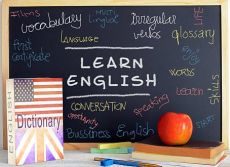800 câu trắc nghiệm Điền từ Tiếng Anh có đáp án cực hay
Chọn hình thức trắc nghiệm (20 câu/60 phút)
Chọn phần
-
Câu 1:
(4) ....................
These features were discovered and explored (1) _______ in the late 1940s. The Lomonosov Ridge, the major ridge, cuts the Arctic Basin (2) _______ in half, extending as a submarine bridge 1,800 km (1,100 mi) (3) _______ Siberia to the northwestern tip of Greenland. Parallel (4) _______ it are two shorter ridges: the Alpha Ridge on the North American (5) _______, defining the Canada and Makarov basins, (6) _______ the Arctic Mid-Ocean Ridge on the Eurasian side, (7) _______ the Nansen and Amundsen basins. The average (8) _______ of the Arctic Ocean is only 1,300 m (4,300 ft) (9) _______ the vast shallow expanses on the continental shelves. The deepest (10) _______ in the Arctic Ocean is 5,450 m (17,880 ft).
A. to
B. of
C. with
D. by
-
Câu 2:
(5) ....................
These features were discovered and explored (1) _______ in the late 1940s. The Lomonosov Ridge, the major ridge, cuts the Arctic Basin (2) _______ in half, extending as a submarine bridge 1,800 km (1,100 mi) (3) _______ Siberia to the northwestern tip of Greenland. Parallel (4) _______ it are two shorter ridges: the Alpha Ridge on the North American (5) _______, defining the Canada and Makarov basins, (6) _______ the Arctic Mid-Ocean Ridge on the Eurasian side, (7) _______ the Nansen and Amundsen basins. The average (8) _______ of the Arctic Ocean is only 1,300 m (4,300 ft) (9) _______ the vast shallow expanses on the continental shelves. The deepest (10) _______ in the Arctic Ocean is 5,450 m (17,880 ft).
A. shape
B. face
C. size
D. side
-
Câu 3:
(6) ....................
These features were discovered and explored (1) _______ in the late 1940s. The Lomonosov Ridge, the major ridge, cuts the Arctic Basin (2) _______ in half, extending as a submarine bridge 1,800 km (1,100 mi) (3) _______ Siberia to the northwestern tip of Greenland. Parallel (4) _______ it are two shorter ridges: the Alpha Ridge on the North American (5) _______, defining the Canada and Makarov basins, (6) _______ the Arctic Mid-Ocean Ridge on the Eurasian side, (7) _______ the Nansen and Amundsen basins. The average (8) _______ of the Arctic Ocean is only 1,300 m (4,300 ft) (9) _______ the vast shallow expanses on the continental shelves. The deepest (10) _______ in the Arctic Ocean is 5,450 m (17,880 ft).
A. and
B. but
C. or
D. so
-
Câu 4:
(7) ....................
These features were discovered and explored (1) _______ in the late 1940s. The Lomonosov Ridge, the major ridge, cuts the Arctic Basin (2) _______ in half, extending as a submarine bridge 1,800 km (1,100 mi) (3) _______ Siberia to the northwestern tip of Greenland. Parallel (4) _______ it are two shorter ridges: the Alpha Ridge on the North American (5) _______, defining the Canada and Makarov basins, (6) _______ the Arctic Mid-Ocean Ridge on the Eurasian side, (7) _______ the Nansen and Amundsen basins. The average (8) _______ of the Arctic Ocean is only 1,300 m (4,300 ft) (9) _______ the vast shallow expanses on the continental shelves. The deepest (10) _______ in the Arctic Ocean is 5,450 m (17,880 ft).
A. forming
B. coming
C. defining
D. making
-
Câu 5:
(8) ....................
These features were discovered and explored (1) _______ in the late 1940s. The Lomonosov Ridge, the major ridge, cuts the Arctic Basin (2) _______ in half, extending as a submarine bridge 1,800 km (1,100 mi) (3) _______ Siberia to the northwestern tip of Greenland. Parallel (4) _______ it are two shorter ridges: the Alpha Ridge on the North American (5) _______, defining the Canada and Makarov basins, (6) _______ the Arctic Mid-Ocean Ridge on the Eurasian side, (7) _______ the Nansen and Amundsen basins. The average (8) _______ of the Arctic Ocean is only 1,300 m (4,300 ft) (9) _______ the vast shallow expanses on the continental shelves. The deepest (10) _______ in the Arctic Ocean is 5,450 m (17,880 ft).
A. height
B. depth
C. width
D. lenght
-
Câu 6:
(9) ....................
These features were discovered and explored (1) _______ in the late 1940s. The Lomonosov Ridge, the major ridge, cuts the Arctic Basin (2) _______ in half, extending as a submarine bridge 1,800 km (1,100 mi) (3) _______ Siberia to the northwestern tip of Greenland. Parallel (4) _______ it are two shorter ridges: the Alpha Ridge on the North American (5) _______, defining the Canada and Makarov basins, (6) _______ the Arctic Mid-Ocean Ridge on the Eurasian side, (7) _______ the Nansen and Amundsen basins. The average (8) _______ of the Arctic Ocean is only 1,300 m (4,300 ft) (9) _______ the vast shallow expanses on the continental shelves. The deepest (10) _______ in the Arctic Ocean is 5,450 m (17,880 ft).
A. by
B. with
C. in spite of
D. because of
-
Câu 7:
(10) ....................
These features were discovered and explored (1) _______ in the late 1940s. The Lomonosov Ridge, the major ridge, cuts the Arctic Basin (2) _______ in half, extending as a submarine bridge 1,800 km (1,100 mi) (3) _______ Siberia to the northwestern tip of Greenland. Parallel (4) _______ it are two shorter ridges: the Alpha Ridge on the North American (5) _______, defining the Canada and Makarov basins, (6) _______ the Arctic Mid-Ocean Ridge on the Eurasian side, (7) _______ the Nansen and Amundsen basins. The average (8) _______ of the Arctic Ocean is only 1,300 m (4,300 ft) (9) _______ the vast shallow expanses on the continental shelves. The deepest (10) _______ in the Arctic Ocean is 5,450 m (17,880 ft).
A. mark
B. area
C. place
D. point
-
Câu 8:
(1) ....................
Conservation, sustainable use and protection of (1) _______ resources including plants, animals, mineral deposits, soils, clean (2) _______, clean air, and fossil fuels such as coal, petroleum, and natural gas. Natural (3) _______ are grouped into two categories, renewable and nonrenewable. A (4) _______ resource is one that may be replaced over time by natural processes, (5) _______ fish populations or natural vegetation, or is inexhaustible, such as solar energy.
A. national
B. international
C. natural
D. lively
-
Câu 9:
(2) ....................
Conservation, sustainable use and protection of (1) _______ resources including plants, animals, mineral deposits, soils, clean (2) _______, clean air, and fossil fuels such as coal, petroleum, and natural gas. Natural (3) _______ are grouped into two categories, renewable and nonrenewable. A (4) _______ resource is one that may be replaced over time by natural processes, (5) _______ fish populations or natural vegetation, or is inexhaustible, such as solar energy.
A. lakes
B. stones
C. sand
D. water
-
Câu 10:
(3) ....................
Conservation, sustainable use and protection of (1) _______ resources including plants, animals, mineral deposits, soils, clean (2) _______, clean air, and fossil fuels such as coal, petroleum, and natural gas. Natural (3) _______ are grouped into two categories, renewable and nonrenewable. A (4) _______ resource is one that may be replaced over time by natural processes, (5) _______ fish populations or natural vegetation, or is inexhaustible, such as solar energy.
A. resources
B. gases
C. fuels
D. plants
-
Câu 11:
(4) ....................
Conservation, sustainable use and protection of (1) _______ resources including plants, animals, mineral deposits, soils, clean (2) _______, clean air, and fossil fuels such as coal, petroleum, and natural gas. Natural (3) _______ are grouped into two categories, renewable and nonrenewable. A (4) _______ resource is one that may be replaced over time by natural processes, (5) _______ fish populations or natural vegetation, or is inexhaustible, such as solar energy.
A. renewable
B. nonrenewable
C. new
D. modern
-
Câu 12:
(5) ....................
Conservation, sustainable use and protection of (1) _______ resources including plants, animals, mineral deposits, soils, clean (2) _______, clean air, and fossil fuels such as coal, petroleum, and natural gas. Natural (3) _______ are grouped into two categories, renewable and nonrenewable. A (4) _______ resource is one that may be replaced over time by natural processes, (5) _______ fish populations or natural vegetation, or is inexhaustible, such as solar energy.
A. such
B. such as
C. as
D. like
-
Câu 13:
(1) ....................
Nonrenewable resources include fossil fuels and mineral deposits, such as (1) _______ ore and gold ore. Conservation activities for nonrenewable resources focus (2) _______ maintaining an adequate supply of these resources well into the future. Natural resources are conserved for their biological, economic, and recreational values, (3) _______ their natural beauty and importance to local cultures. (4) _______, tropical rain forests are protected for their important role in both global ecology and the economic livelihood of the local culture; a coral reef may be (5) _______ for its recreational value for scuba divers; and a scenic river may be protected for its natural beauty.
A. iron
B. water
C. metal
D. gold
-
Câu 14:
(2) ....................
Nonrenewable resources include fossil fuels and mineral deposits, such as (1) _______ ore and gold ore. Conservation activities for nonrenewable resources focus (2) _______ maintaining an adequate supply of these resources well into the future. Natural resources are conserved for their biological, economic, and recreational values, (3) _______ their natural beauty and importance to local cultures. (4) _______, tropical rain forests are protected for their important role in both global ecology and the economic livelihood of the local culture; a coral reef may be (5) _______ for its recreational value for scuba divers; and a scenic river may be protected for its natural beauty.
A. in
B. on
C. at
D. by
-
Câu 15:
(3) ....................
Nonrenewable resources include fossil fuels and mineral deposits, such as (1) _______ ore and gold ore. Conservation activities for nonrenewable resources focus (2) _______ maintaining an adequate supply of these resources well into the future. Natural resources are conserved for their biological, economic, and recreational values, (3) _______ their natural beauty and importance to local cultures. (4) _______, tropical rain forests are protected for their important role in both global ecology and the economic livelihood of the local culture; a coral reef may be (5) _______ for its recreational value for scuba divers; and a scenic river may be protected for its natural beauty.
A. like
B. also
C. and
D. as well as
-
Câu 16:
(4) ....................
Nonrenewable resources include fossil fuels and mineral deposits, such as (1) _______ ore and gold ore. Conservation activities for nonrenewable resources focus (2) _______ maintaining an adequate supply of these resources well into the future. Natural resources are conserved for their biological, economic, and recreational values, (3) _______ their natural beauty and importance to local cultures. (4) _______, tropical rain forests are protected for their important role in both global ecology and the economic livelihood of the local culture; a coral reef may be (5) _______ for its recreational value for scuba divers; and a scenic river may be protected for its natural beauty.
A. However
B. Nevertheless
C. For example
D. In fact
-
Câu 17:
(5) ....................
Nonrenewable resources include fossil fuels and mineral deposits, such as (1) _______ ore and gold ore. Conservation activities for nonrenewable resources focus (2) _______ maintaining an adequate supply of these resources well into the future. Natural resources are conserved for their biological, economic, and recreational values, (3) _______ their natural beauty and importance to local cultures. (4) _______, tropical rain forests are protected for their important role in both global ecology and the economic livelihood of the local culture; a coral reef may be (5) _______ for its recreational value for scuba divers; and a scenic river may be protected for its natural beauty.
A. killed
B. protected
C. fed
D. left
-
Câu 18:
(1) ....................
National Parks and Preserves, (1) _______ public lands or bodies of water within a country, set aside by the (2) _______ to protect ecosystems, plant and animal species, scenic landscapes, geologic formations, or historical or archaeological (3) _______. National parks are managed primarily for public recreation, (4) _______ exceptional locations where visitors can view wildlife and enjoy the (5) _______.
A. one
B. only
C. unique
D. just
-
Câu 19:
(2) ....................
National Parks and Preserves, (1) _______ public lands or bodies of water within a country, set aside by the (2) _______ to protect ecosystems, plant and animal species, scenic landscapes, geologic formations, or historical or archaeological (3) _______. National parks are managed primarily for public recreation, (4) _______ exceptional locations where visitors can view wildlife and enjoy the (5) _______.
A. hospital
B. school
C. country
D. government
-
Câu 20:
(3) ....................
National Parks and Preserves, (1) _______ public lands or bodies of water within a country, set aside by the (2) _______ to protect ecosystems, plant and animal species, scenic landscapes, geologic formations, or historical or archaeological (3) _______. National parks are managed primarily for public recreation, (4) _______ exceptional locations where visitors can view wildlife and enjoy the (5) _______.
A. sites
B. places
C. spots
D. lands














